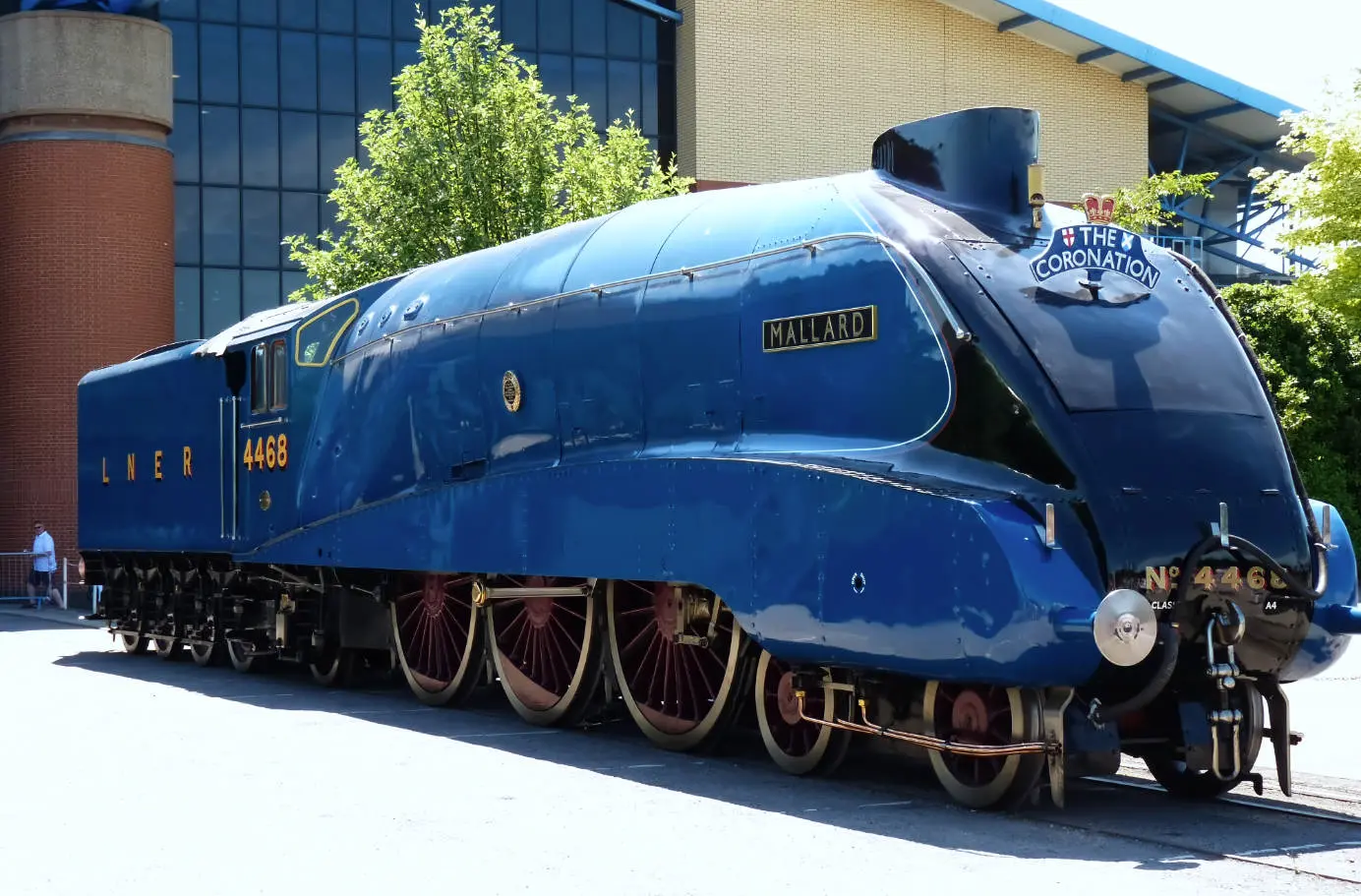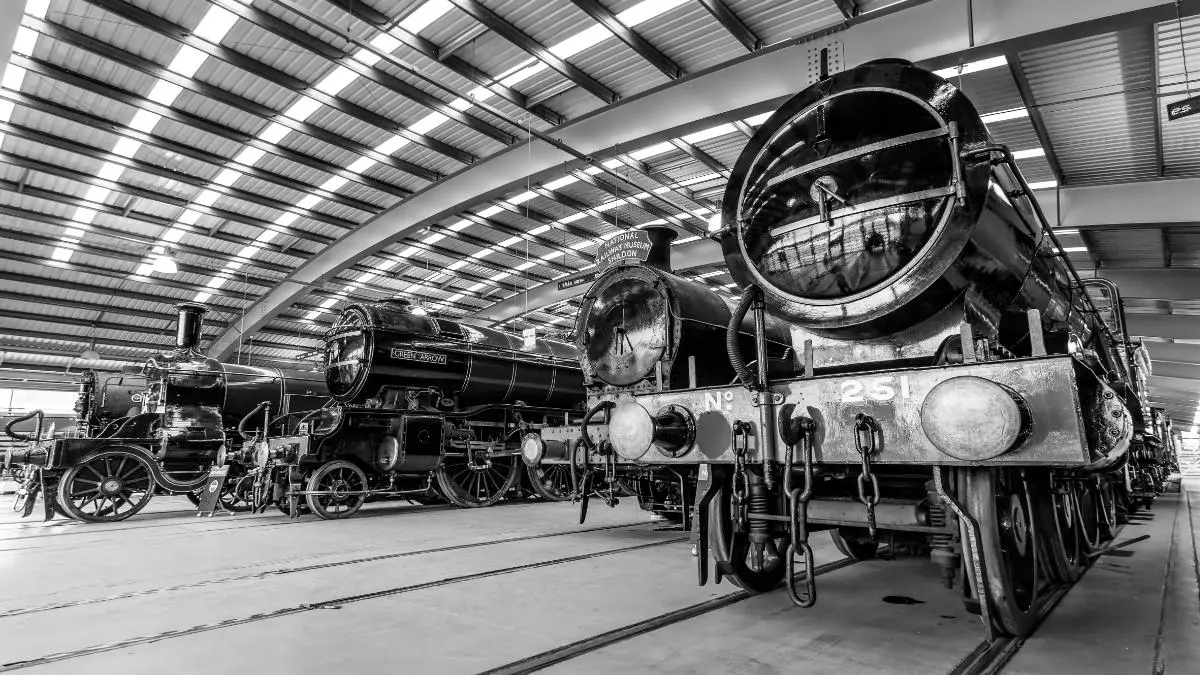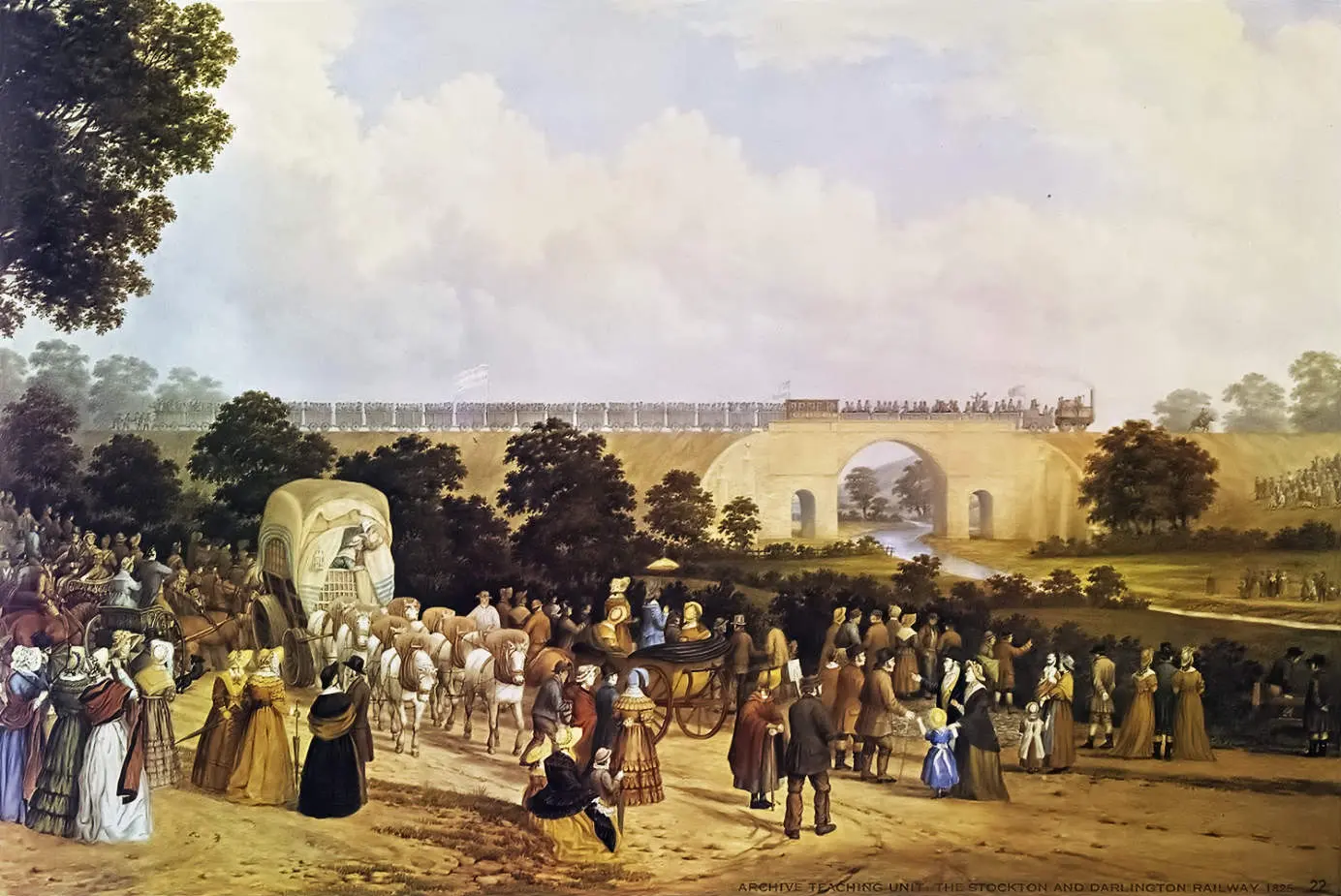The Fascinating History of the Mallard Train
The history of the Mallard train, including its design, record-breaking speed, and significance in the world of locomotives. Learn more about this iconic train.
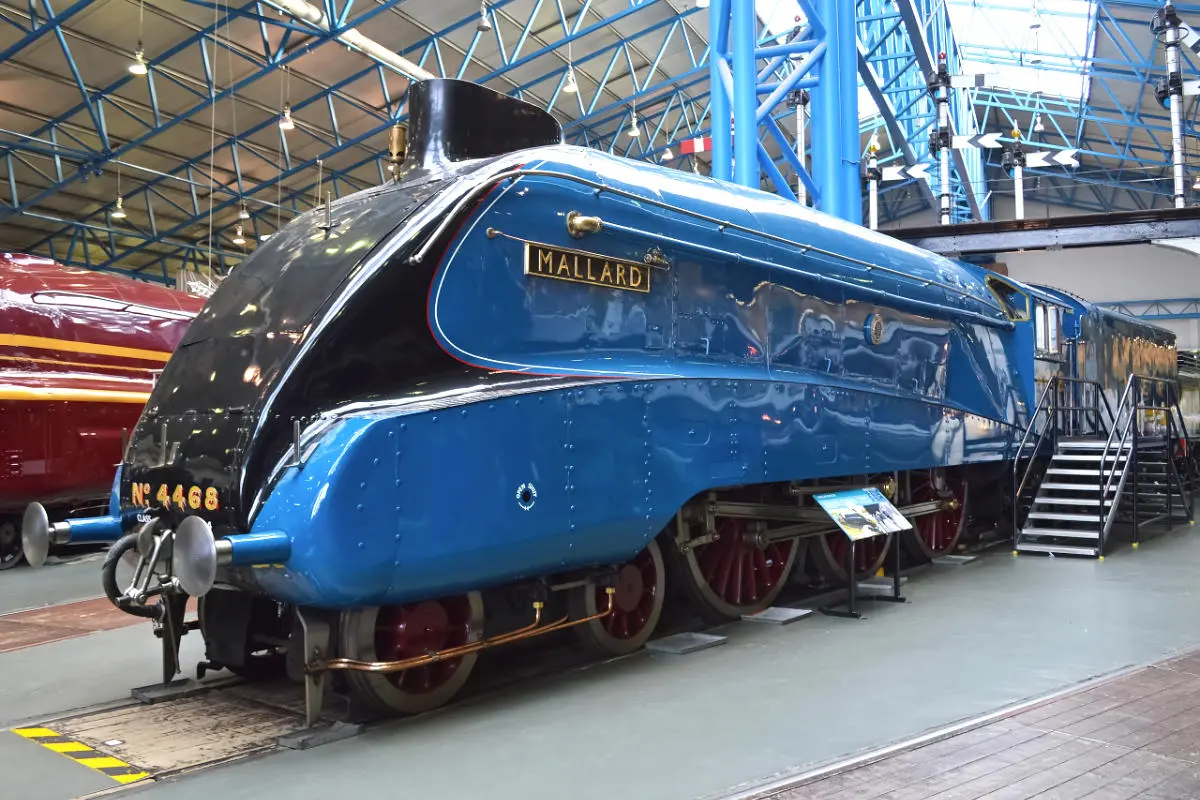
The history of the Mallard train intertwines remarkable engineering, historical significance, and cultural impact. As one of the most iconic steam locomotives in the world, the Mallard continues to capture the imagination of train enthusiasts and history buffs alike.
Built in the 1930s, this magnificent locomotive not only set speed records but also played a crucial role in the evolution of train travel. In this blog post, we will explore the captivating history of the Mallard train, delving into its design, achievements, and legacy.
About the Mallard Steam Locomotive
The Mallard steam locomotive, numbered 4468, is a member of the A4 class of locomotives designed by Sir Nigel Gresley for the London and North Eastern Railway (LNER). Built at the LNER's Doncaster Works in 1938, the Mallard was part of a production run that included 35 A4 locomotives, all constructed between 1935 and 1938. The A4 class was specifically engineered for high-speed passenger services, reflecting Gresley's vision of creating advanced, streamlined locomotives capable of both speed and efficiency.
One of the standout features of the Mallard is its high-pressure steam engine, which operates at a boiler pressure of 250 pounds per square inch (psi). This high-pressure system was essential for generating the locomotive's impressive power output, which allowed it to reach speeds previously unattainable for steam engines. The Mallard's three-cylinder design, coupled with the innovative conjugated valve gear, ensured that steam was distributed efficiently to the cylinders, enhancing performance.
The locomotive's design also incorporated a range of advanced materials and construction techniques. The use of lightweight steel in the frame and boiler helped reduce the overall weight, contributing to the Mallard's ability to achieve high speeds. Additionally, the locomotive was fitted with a double chimney and Kylchap double blastpipe, which improved the efficiency of steam exhaust, further boosting performance.
Aesthetically, the Mallard's streamlined form was a product of rigorous aerodynamic testing (including wind tunnel testing), aimed at minimizing air resistance. Its distinctive wedge-shaped front end and smooth, flowing lines not only reduced drag but also gave the locomotive a futuristic appearance that captured the public imagination. The Mallard's iconic garter blue livery, accented with red wheels and trim, made it instantly recognizable and a favorite among railway enthusiasts.
The Birth of the Mallard Train
The Mallard train was conceived by the visionary British engineer Sir Nigel Gresley, who was the chief mechanical engineer for the London and North Eastern Railway (LNER).
Built in 1938 at the LNER's Doncaster Works, the Mallard was part of the A4 class of locomotives, known for their streamlined designs aimed at achieving higher speeds and greater efficiency. Gresley’s ambition was to create a locomotive capable of long-distance travel while captivating the public with its futuristic, sleek appearance. Numbered 4468, the Mallard quickly gained recognition for its distinct streamlined design, heavily influenced by the principles of aerodynamics to reduce drag and boost speed.
The train's blue livery made it instantly recognizable and set it apart from other locomotives of its time. The design not only enhanced its performance but also made a bold statement about the possibilities of modern engineering. Gresley's approach incorporated a range of innovative features, including a high-pressure steam engine and a lightweight frame.
These elements were critical in achieving the Mallard's high-speed capabilities. The locomotive was engineered to be both powerful and efficient, embodying the technological advancements of the era. The Mallard's creation was a milestone in railway engineering, combining form and function in a way that had never been seen before. It wasn't just about speed. It was about showcasing the artistic and scientific potential of locomotive design.
The Design and Engineering
The engineering behind the Mallard train was groundbreaking, thanks to Sir Nigel Gresley's innovative approach. One of the key innovations was the use of a unique conjugated valve gear, which significantly improved the locomotive’s efficiency and performance by synchronizing the motion of the valves that controlled steam flow to the cylinders. This allowed for more precise control and smoother operation.
Another critical aspect was the high-pressure steam engine, which enabled the Mallard to generate more power without a corresponding increase in fuel consumption. This high-pressure system, combined with a lightweight frame, was essential for achieving the high speeds for which the Mallard became famous. The construction materials used in the Mallard’s frame were chosen for their strength and durability, yet they were lighter than those used in earlier locomotive designs, allowing for greater speed and efficiency.
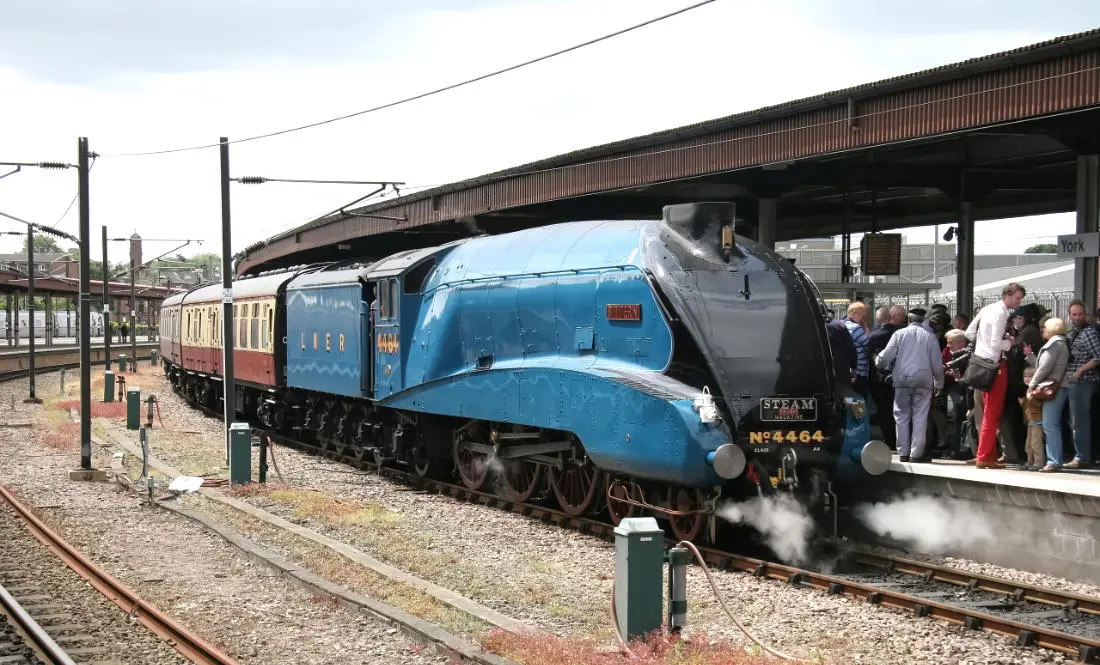
The Mallard’s aerodynamic design was also a major factor in its performance. Its streamlined body minimized air resistance, a feature that was meticulously tested and refined to maximize speed. The train's front end was designed to create a “slipstream” effect, allowing it to cut through the air with minimal drag. This aerodynamic efficiency was a pioneering step in locomotive design and remains a subject of admiration in engineering circles. Gresley also paid attention to the details that enhanced both functionality and aesthetics.
The placement of various components, from the boiler to the cab, was optimized to ensure not only performance but also ease of maintenance and operation. The result was a locomotive that was not just fast and powerful, but also a work of art in its own right, embodying the pinnacle of steam engineering during its era.
Setting the World Speed Record
On July 3, 1938, the Mallard made history by achieving a world speed record of 126 miles per hour (203 km/h) during a test run on the East Coast Main Line. This incredible feat was a result of meticulous planning and the expert handling of the locomotive by its crew.
The test run was overseen by the London and North Eastern Railway (LNER) and took place under optimal conditions, including favorable weather and a carefully selected stretch of track known for its smoothness. The Mallard's world speed record was not merely a matter of pushing the locomotive to its limits; it was a well-orchestrated event that required precise coordination.
The crew, led by driver Joe Duddington and fireman Thomas Bray, played a critical role in managing the Mallard’s performance. Their expertise ensured that the locomotive operated at peak efficiency throughout the run. Achieving such a high speed required the Mallard to maintain a delicate balance between power and control. The train's high-pressure steam engine, innovative conjugated valve gear, and lightweight frame were all pushed to their maximum capabilities.
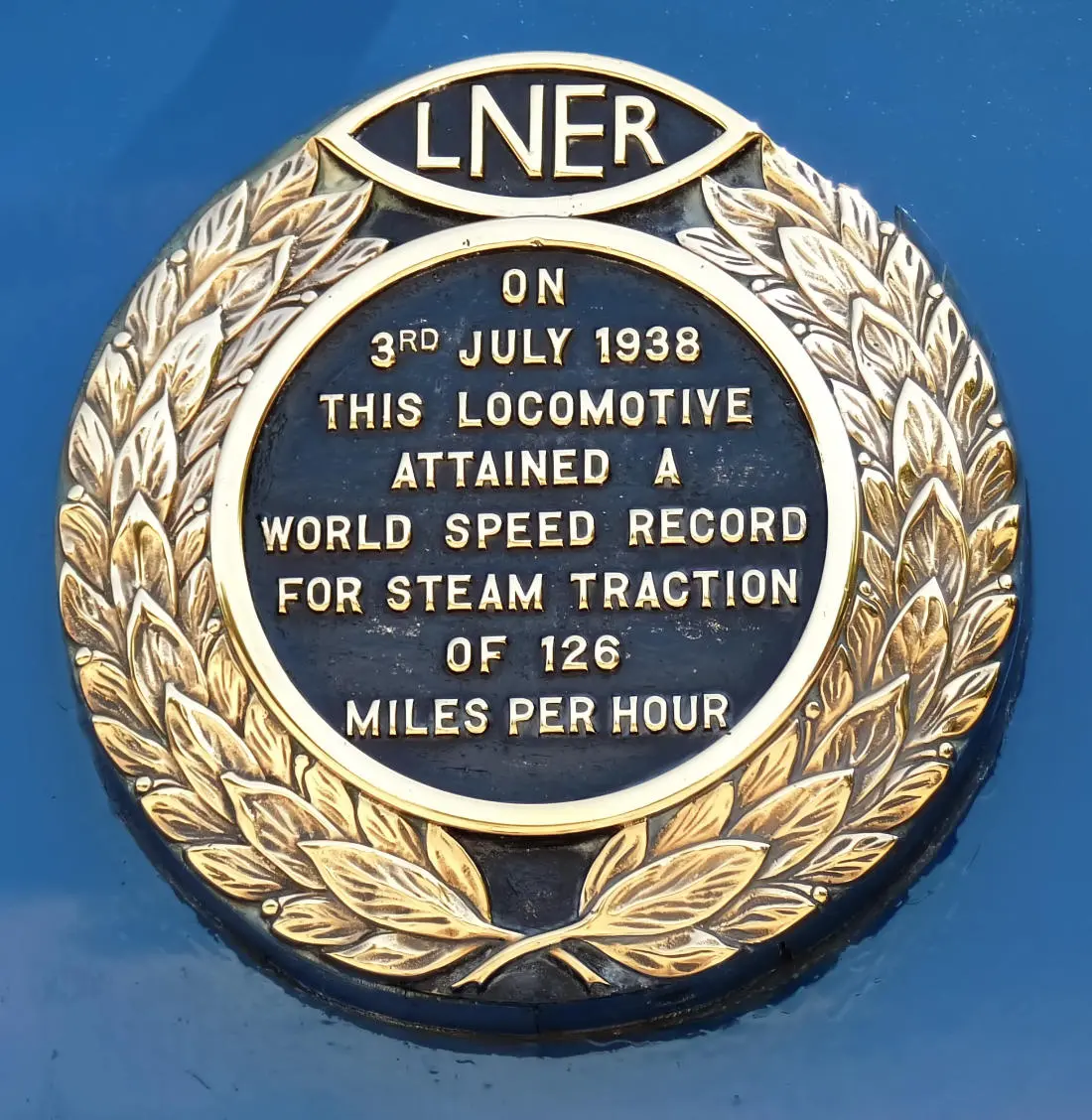
As the Mallard hurtled down the track, every component had to work in perfect harmony to sustain the record-breaking pace. The significance of this achievement extended beyond the realm of railway engineering. The Mallard's speed record captured the public's imagination and became a symbol of British technological prowess. It demonstrated the potential of steam locomotives at a time when rail travel was a primary mode of long-distance transportation, even as aviation began to emerge as a competitor.
The world speed record set by the Mallard remains unbeaten to this day for steam locomotives, a testament to the groundbreaking design and engineering innovations introduced by Sir Nigel Gresley and his team.
The Legacy of Sir Nigel Gresley
Sir Nigel Gresley's impact on railway engineering is nothing short of revolutionary. As the driving force behind the Mallard, Gresley demonstrated an exceptional ability to blend cutting-edge technology with aesthetic appeal.
His work on the Mallard wasn’t an isolated achievement but part of a broader vision that spanned several pioneering locomotives, including the famed Flying Scotsman and the Peppercorn A1 class. Gresley's forward-thinking approach centered on innovations like the conjugated valve gear, which allowed for greater efficiency and performance in steam locomotives. His insistence on high-pressure steam engines and lightweight materials not only contributed to the Mallard's record-breaking speed but also set new standards for locomotive engineering.
These technical advancements were not just theoretical; they had practical, lasting impacts on how trains were designed and operated. Beyond the mechanics, Gresley was also a master of integrating form and function. His streamlined designs were more than just visually striking; they were meticulously engineered to reduce drag and improve speed, embodying a holistic understanding of how design and engineering interplay. This focus on aerodynamics has influenced train design well into the modern era, proving the timelessness of his innovations.
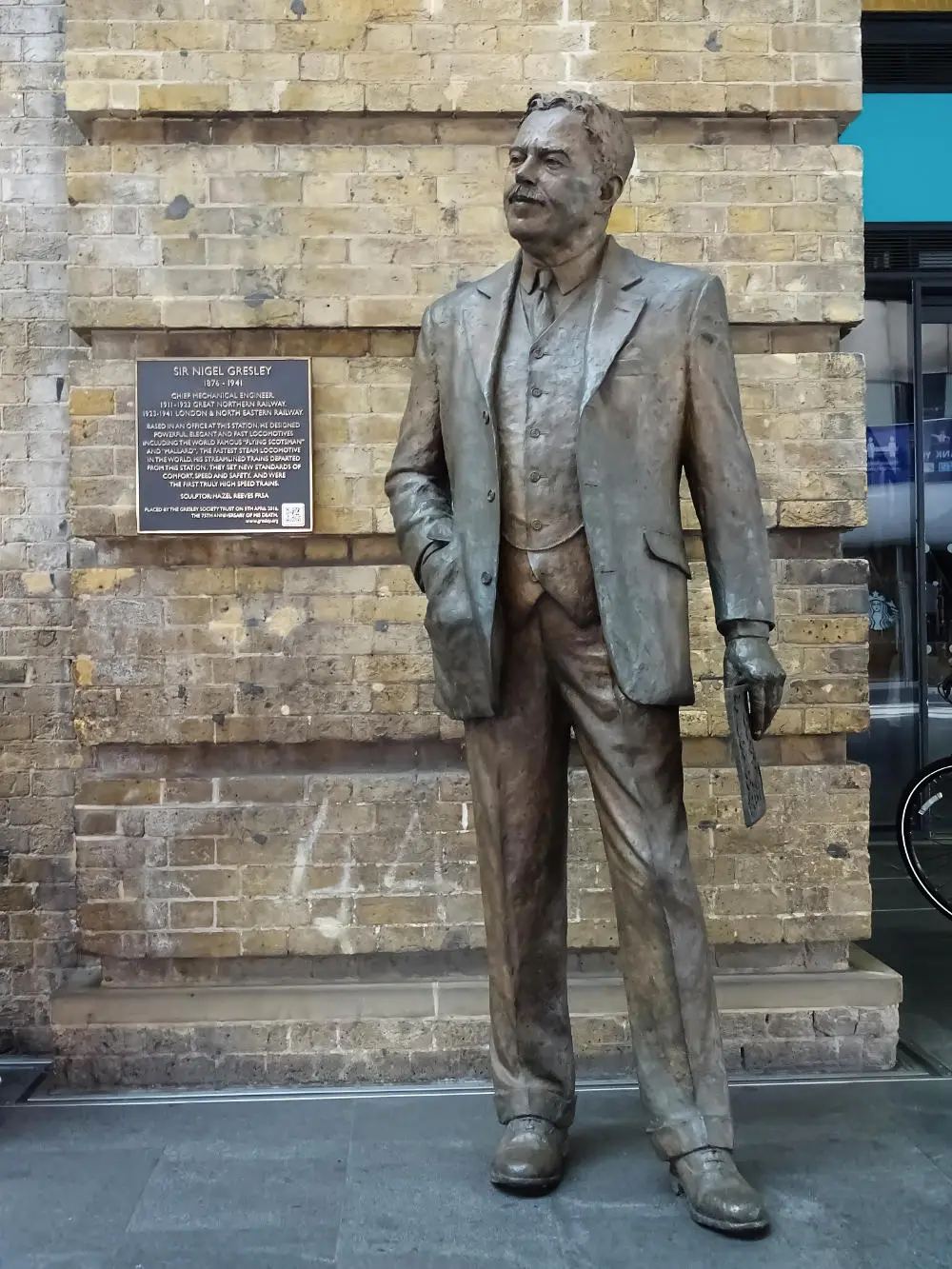
Furthermore, Gresley's work helped elevate the status of the LNER and British railways on the global stage. His commitment to excellence and innovation turned trains into symbols of national pride and technological prowess. Gresley’s ability to push the boundaries of what was possible with steam power created a legacy that would influence railway engineering for generations.
Today, his contributions are celebrated not just through the preservation of his locomotives but also in the principles that continue to guide modern rail transport. His blend of technical genius and visionary design has left an indelible mark on the history of railway engineering.
The Mallard in World War II
During World War II, the Mallard demonstrated its resilience and versatility by playing a crucial role in transporting troops, equipment, and essential supplies across the British rail network.
As the nation faced the immense challenges of war, the Mallard's reliability and capacity made it an invaluable asset in maintaining the flow of resources necessary for the war effort. Its robust design and powerful engine allowed it to handle the increased demands of wartime logistics, proving its worth beyond setting speed records.
Despite the rigors of wartime service, the Mallard remained a workhorse of the British railway system. It frequently undertook long hauls, often operating under difficult conditions, including blackout regulations and the constant threat of enemy action. The Mallard’s ability to perform under such pressures underscored the robustness and durability of its design, characteristics that Sir Nigel Gresley had meticulously crafted. The locomotive's contributions during this period extended beyond mere functionality.
To blend in with the nighttime darkness in case of air raids, the Mallard was painted black during World War 2.
Post-War Service and Decline
After World War II, the Mallard continued to operate on the British rail network, navigating the changing landscape of transportation. However, the post-war era marked the beginning of a significant transition in railway technology.
The advent of diesel and electric trains, which offered greater speed, efficiency, and lower operational costs, began to eclipse the once-dominant steam locomotives. The Mallard, despite its storied past and engineering marvels, faced the realities of this technological shift.
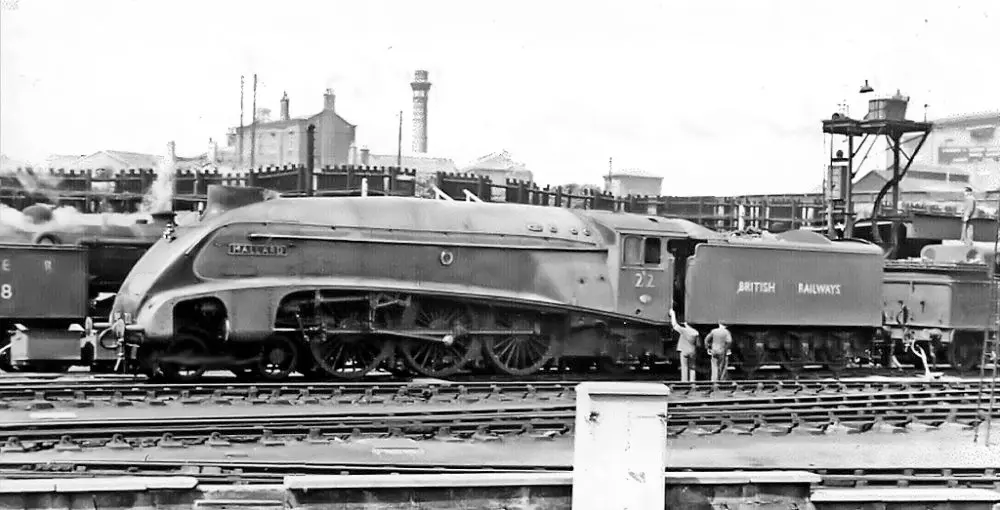
The modernization efforts of the British railway system during the 1960s prioritized the new, more efficient forms of train travel. As a result, steam locomotives like the Mallard were gradually phased out, making way for the next generation of trains. This period saw the retirement of many steam engines, including those of the celebrated A4 class. Though no longer at the forefront of railway innovation, the Mallard retained a special place in the hearts of train enthusiasts and the general public. Its appearances became increasingly rare, often limited to special excursions, exhibitions, and promotional events designed to celebrate its historical significance.
These events allowed the Mallard to maintain its connection with the public, even as it stepped back from regular service. By the early 1960s, the inevitable decline of steam power led to the Mallard's official retirement from active duty. Its final years in service were marked by a sense of nostalgia and a recognition of the locomotive's contributions to railway history.
Preservation and Restoration Efforts
After its retirement in 1963, the Mallard found a new home at the National Railway Museum in York, where it became a celebrated exhibit and a focus of numerous preservation and restoration projects. These efforts have aimed to maintain the Mallard's mechanical and aesthetic integrity, ensuring that it remains a pristine example of 1930s engineering excellence.
Restoration projects have included meticulous work on its high-pressure steam engine, ensuring that the complex machinery is preserved and protected from deterioration. The exterior has also been carefully maintained to reflect the Mallard's original streamlined design, with particular attention paid to its distinctive blue livery, which continues to capture the public's imagination. Specialized teams have worked to refurbish various components of the locomotive, using period-appropriate materials and techniques to stay true to its historical roots.
This dedication to authenticity extends to the interior of the cab, where the controls and instrumentation have been preserved to provide visitors with an accurate representation of what it was like to operate this iconic locomotive. In addition to mechanical and aesthetic restoration, the Mallard has been featured in several dynamic displays and events at the National Railway Museum. These initiatives allow the public to engage with the locomotive beyond a static exhibit, offering interactive experiences and educational programs highlighting the Mallard's contributions to railway history.
The ongoing preservation efforts ensure that the Mallard remains an enduring symbol of British engineering prowess. By maintaining the locomotive in peak condition, the National Railway Museum not only honors the legacy of Sir Nigel Gresley but also provides a tangible link to the golden age of steam travel for future generations to appreciate and admire.
The Mallard in Popular Culture
The Mallard train has left an indelible mark on popular culture, becoming a symbol of technological achievement and British heritage. Its striking design and historical significance have led to numerous appearances in documentaries, books, and films that celebrate the golden age of steam travel.
Train enthusiasts and casual viewers alike are captivated by its sleek, aerodynamic form and the stories of its record-breaking speed. The locomotive has been featured prominently in railway-themed documentaries and television programs, which often delve into its engineering marvels and the era it represents.
Children's books and educational materials frequently use the Mallard as a focal point to introduce young readers to the history of railroads and the innovations of Sir Nigel Gresley. In addition to visual media, the Mallard has also inspired artists and writers. Its image can be found in paintings, posters, and even stamps, where it symbolizes the pinnacle of steam-powered travel.
Literature set during the early to mid-20th century sometimes references the Mallard, adding authenticity and a touch of nostalgia to the narrative. Marketing campaigns have also harnessed the Mallard's iconic status. The train has appeared in advertisements, especially those promoting British heritage and engineering prowess. Model train sets featuring the Mallard are popular among collectors and hobbyists, allowing fans to recreate its historic runs on a miniature scale.
Events at museums and heritage railways often include the Mallard, drawing crowds eager to experience a piece of history. Its participation in special exhibitions and live steam events provides a dynamic way for the public to connect with the past.
Visiting the Mallard Today
Today, visitors to the National Railway Museum in York have the opportunity to see the Mallard up close, experiencing firsthand the grandeur of this engineering marvel. The museum features comprehensive exhibitions that delve into the Mallard's storied past, offering detailed insights into its construction, groundbreaking speed record, and vital role during wartime.
One of the highlights of visiting the Mallard is the guided tours provided by the museum. These tours offer an immersive experience, filled with anecdotes and historical context that bring the locomotive's rich history to life. Knowledgeable guides share captivating stories about Sir Nigel Gresley's innovative designs and the crew's heroic efforts during its record-setting run in 1938. Visitors can explore the locomotive's meticulously preserved interior, gaining a unique perspective on the controls and instrumentation that were state-of-the-art during the 1930s.
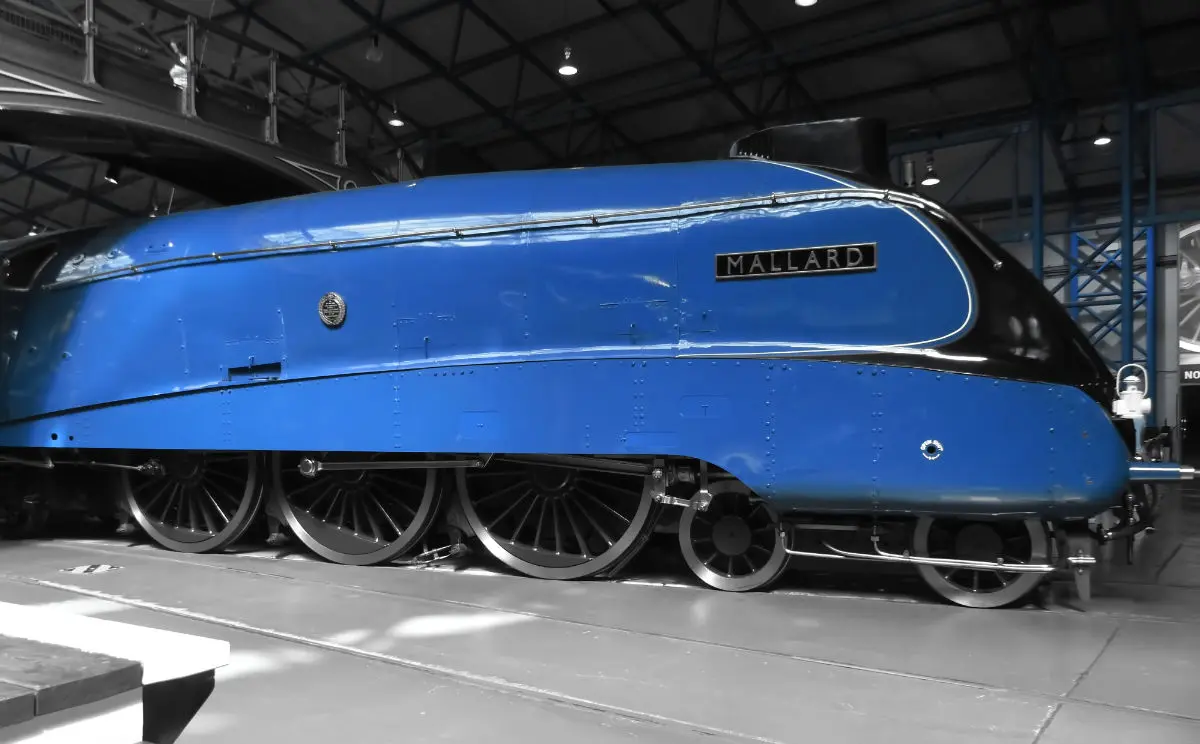
The attention to detail in the restoration allows visitors to appreciate the complexities of operating a high-speed steam engine and understand the craftsmanship involved in maintaining such a powerful machine. Special events at the museum frequently feature the Mallard, allowing enthusiasts to engage with this piece of railway history in dynamic and interactive ways. Whether it's a themed exhibition, a commemorative celebration, or an educational workshop, these events offer a deeper appreciation of the Mallard's impact on railway engineering and its continued legacy.
Additionally, the museum's extensive collection of artifacts and archival materials provides further context to the Mallard's significance. From original blueprints to historical photographs and personal accounts, these resources offer a comprehensive understanding of the locomotive's contributions to rail travel and engineering. For those passionate about railway history or simply curious about this iconic steam engine, a visit to see the Mallard is an unforgettable experience that connects past innovations with present-day appreciation.
The Mallard's Influence on Modern Trains
The Mallard's groundbreaking design and engineering principles have left a lasting imprint on modern train technology. Sir Nigel Gresley's focus on aerodynamics, efficiency, and high-speed capability has directly influenced the development of contemporary high-speed trains.
The streamlined shape of the Mallard, meticulously crafted to reduce air resistance, paved the way for the aerodynamic designs seen in today’s bullet trains and other high-speed rail systems. Modern engineers continue to apply the principles of aerodynamics and lightweight construction pioneered by Gresley.
These innovations contribute to reduced energy consumption and enhanced speed, proving that the Mallard’s legacy is more than historical—it’s practical and enduring. Additionally, the emphasis on high-pressure steam engines in the Mallard's era has translated into current pursuits of optimizing power output and fuel efficiency in electric and diesel engines.
The Mallard also underscored the importance of integrating form and function in locomotive design. Today's trains not only strive for superior performance but also incorporate aesthetic elements that reflect modern engineering prowess. The legacy of the Mallard thus serves as a benchmark for innovation, encouraging a holistic approach to train design that values both technological advancement and visual appeal.
In essence, the pioneering work done on the Mallard continues to resonate within the rail industry. Its influence extends to the latest advancements in train technology, including the development of more sustainable and efficient transportation solutions that build upon the foundational principles established by this iconic locomotive.
Conclusion
The Mallard train's journey through history is a testament to human ingenuity and the relentless pursuit of excellence in engineering. Its record-breaking feats and enduring legacy underscore the profound impact of steam power on transportation. From its innovative design by Sir Nigel Gresley to its vital role during World War II and its continued influence on modern trains, the Mallard exemplifies the harmonious blend of form and function.
The preservation and ongoing celebration of the Mallard at the National Railway Museum ensure that this iconic locomotive remains a source of inspiration and education. As we admire the Mallard's sleek, aerodynamic form and marvel at its engineering achievements, we are reminded of the transformative power of rail travel and the importance of preserving such historical milestones.
The Mallard's story is not just about speed records or mechanical prowess; it is about the visionaries who pushed the boundaries of what was possible. It serves as a beacon for future generations, illustrating the timeless principles of innovation, efficiency, and design that continue to drive advancements in rail technology today.
